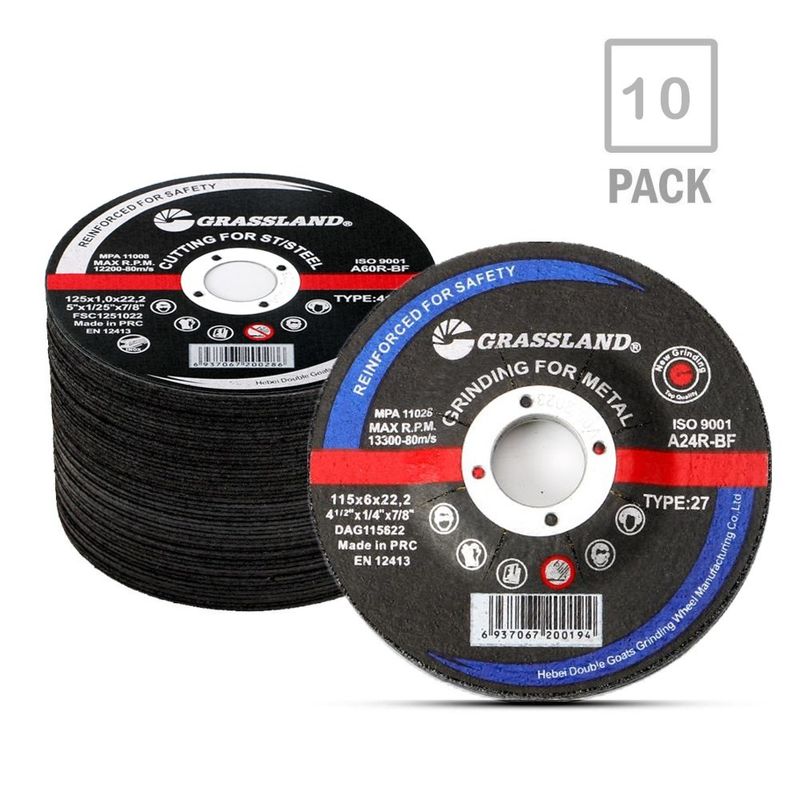Grinding Discs for Stone Your Comprehensive Guide
When it comes to working with stone, whether for professional masonry or DIY home projects, the right tools can make all the difference. Among these tools, grinding discs are essential for achieving a smooth finish and precise results. This article provides an overview of grinding discs for stone, their types, applications, and tips for effective use.
Understanding Grinding Discs
Grinding discs are circular flat tools equipped with abrasive materials that are designed to grind, shape, and polish various surfaces, including stone. The choice of grinding disc can significantly impact the quality of your work. They are available in different materials, sizes, and grit levels, each suited for specific tasks.
Types of Grinding Discs
1. Diamond Grinding Discs These are the most effective type for stone work. The diamonds embedded in the disc provide incredible hardness, making them ideal for grinding granite, marble, and other hard stones. They are available in various diamond concentrations and bond types, allowing users to choose the best fit for their specific stone projects.
2. Silicon Carbide Discs Typically used for softer stones, such as limestone or sandstone, silicon carbide discs are also effective for concrete and masonry. They tend to wear out faster than diamond discs but are often more affordable, making them suitable for lighter jobs.
3. Resin Bond Discs These flexible discs are beneficial for polishing purposes. They provide a smooth finish and are often used after initial grinding to enhance the shine of stone surfaces.
4. Ceramic Discs Ideal for heavy-duty applications, ceramic grinding discs are designed for high-performance tasks. They can be used on a variety of stones and are known for their durability and longevity.
Applications of Grinding Discs for Stone
Grinding discs are versatile and can be used in several applications, including
grinding discs for stone

- Surface Preparation Before performing any installation work, it is crucial to prepare the stone surface. Grinding discs help remove any rough edges or existing coatings, ensuring better adhesion for adhesives or sealants.
- Shaping and Cutting Grinding discs can be used to shape stone materials into required sizes and configurations. Whether creating a countertop edge or fitting stones for a decorative wall, having the right disc makes the task easier and more precise.
- Polishing After grinding, many stone surfaces need polishing to achieve a glossy finish. Various grit levels of polishing discs can progressively refine the surface, bringing out the stone's natural beauty.
Tips for Effective Use
1. Choose the Right Disc Always select the appropriate disc for the specific type of stone and the task at hand. Using the wrong disc can lead to poor performance and damage to the stone.
2. Maintain Proper Speed Each grinding disc has a recommended operating speed. Adhering to these recommendations not only ensures safety but also prolongs the life of the disc.
3. Apply Consistent Pressure When grinding, apply steady and even pressure to avoid creating uneven surfaces. Too much pressure can also lead to overheating and disc wear.
4. Wear Safety Gear Stone grinding can produce hazardous dust and debris. Always wear appropriate safety gear including gloves, goggles, and a dust mask to protect yourself during the process.
Conclusion
Grinding discs are indispensable tools in stone working, allowing for precision and versatility in a range of applications. By understanding the different types of grinding discs available and following best practices, users can achieve stunning results in their stone projects. Whether you are a professional or a hobbyist, investing in quality grinding discs will undoubtedly enhance your work and help bring your stone projects to life.
Post time:Nov - 23 - 2024

















